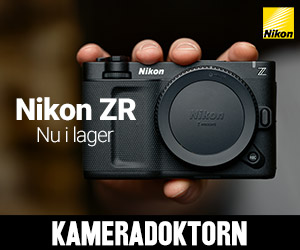The_SuedeII
Aktiv medlem
Det Anders inte förstod berodde nog inte på din formulering, eller din engelska. Snarare kanske att det var ett trevligt CV - men var finns någon som helst koppling till halvledarteknik, lågnivå-logik i bildbehandling eller sensor/mät-teknik på fysisk nivå?
Vill du hävda att en fotodiod är olinjär (med de referenser och toleranser en fotografisk tillämpning innebär) får du nog komma med betydligt tyngre argument än ditt CV. Som till exempel en referens där du påvisar att det du säger stämmer....?
Jag kan ange ett par ganska tunga referenser till att en fotografisk tillämpad fotodiod, såsom de som används i en normal kameras CCD eller CMOS-sensor är så linjär inom sitt arbetsområde att avvikelserna är för användaren lika med noll och intet:
Planck, Einstein, Heisenberg, Schrödinger, Fermi, Dirac, Bose, Feynman och Hawking. Samt naturligtvis samtliga som arbetar inom fältet fotovoltaisk konversion idag. Samt alla som arbetar med lågnivå-logik för kamerasensorer. Ganska stabila namn att luta sig på utan att jag ska behöva lägga upp mitt eget CV på fotosidan - tycker jag iaf.
..........................
Det är nämligen ganska omöjligt att fuska med linjäriteten - det går alltid att mäta sig fram till ett fusk. Ljusenergi kan aldrig mätas med större exakthet än den som definieras av Poisson-distrubutionen, som definierat i http://en.wikipedia.org/wiki/Shot_noise
Denna ger ett en normaldistribution av felvärdena som alltid är exakt roten av den uppmätta mängden - om man förstärker eller dämpar en signal kommer förskjutningen i feldistributionen visa detta. I en normal fotosensor följs dessa fysiska grundlagar med sådan nogrannhet att jag själv ibland blir förvånad över hur väl saker går att simulera i teoretiska modeller.
Man KAN alltså inte förändra linjäriteten i en pixel/sensor utan att jag sedan kan påvisa det i efterhand (om jag bara har tillräckligt antal mätvärden att utgå ifrån...)
Om du tittar på linjäritetskurvorna i det jag visade från en D7000 i inlägget tidigare så stämmer normaldistributionerna genom hela registret, från 0dB ner till -66dB (-11Ev) med så låga felmarginaler att man kan säga med absolut säkerhet att INGEN linearitets-korrigering har påförts signalen. Sensorn - och signalen! - är absolut linjär, plus minus ca 2% inom hela arbetsområdet.
Vill du hävda att en fotodiod är olinjär (med de referenser och toleranser en fotografisk tillämpning innebär) får du nog komma med betydligt tyngre argument än ditt CV. Som till exempel en referens där du påvisar att det du säger stämmer....?
Jag kan ange ett par ganska tunga referenser till att en fotografisk tillämpad fotodiod, såsom de som används i en normal kameras CCD eller CMOS-sensor är så linjär inom sitt arbetsområde att avvikelserna är för användaren lika med noll och intet:
Planck, Einstein, Heisenberg, Schrödinger, Fermi, Dirac, Bose, Feynman och Hawking. Samt naturligtvis samtliga som arbetar inom fältet fotovoltaisk konversion idag. Samt alla som arbetar med lågnivå-logik för kamerasensorer. Ganska stabila namn att luta sig på utan att jag ska behöva lägga upp mitt eget CV på fotosidan - tycker jag iaf.
..........................
Det är nämligen ganska omöjligt att fuska med linjäriteten - det går alltid att mäta sig fram till ett fusk. Ljusenergi kan aldrig mätas med större exakthet än den som definieras av Poisson-distrubutionen, som definierat i http://en.wikipedia.org/wiki/Shot_noise
Denna ger ett en normaldistribution av felvärdena som alltid är exakt roten av den uppmätta mängden - om man förstärker eller dämpar en signal kommer förskjutningen i feldistributionen visa detta. I en normal fotosensor följs dessa fysiska grundlagar med sådan nogrannhet att jag själv ibland blir förvånad över hur väl saker går att simulera i teoretiska modeller.
Man KAN alltså inte förändra linjäriteten i en pixel/sensor utan att jag sedan kan påvisa det i efterhand (om jag bara har tillräckligt antal mätvärden att utgå ifrån...)
Om du tittar på linjäritetskurvorna i det jag visade från en D7000 i inlägget tidigare så stämmer normaldistributionerna genom hela registret, från 0dB ner till -66dB (-11Ev) med så låga felmarginaler att man kan säga med absolut säkerhet att INGEN linearitets-korrigering har påförts signalen. Sensorn - och signalen! - är absolut linjär, plus minus ca 2% inom hela arbetsområdet.







